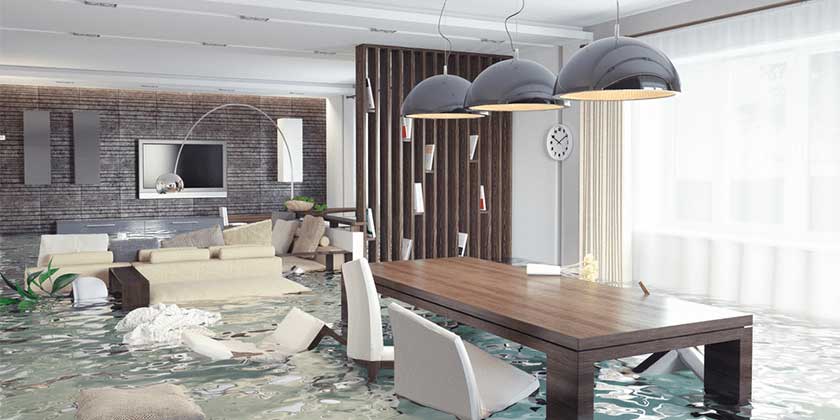
In addition to being low-cost and easily accessible, mobile homes also have a few weaknesses that site-built homes do not have. For instance, one of the greatest problems mobile homeowners have to deal with is damage from floods. Floods often occur with very little warning, and as mobile homes are some of the cheapest structures and most are built in flood-prone and low-lying areas, they are the most vulnerable to these disasters. Knowing the best practices to protect the property could differentiate between great loss and a manageable restoration
Thus, this guide provides very vital knowledge and procedures for flood protection of mobile homes. In terms of preparing for a flood, for instance, they are taught how to identify the risk of flooding for their property and how to set up permanent solutions for the flood, as well as what local aids are available. You will hopefully be able to understand how to take these preventative actions to help ensure not only the safety of your home but the peace of your mind as well.
Assessing the Flood Risk for Your Mobile Home:
Flood risk assessment for your mobile home is the first step. As a first step, you should check if your residence lies inside a designated flood zone or boundary. The Federal Emergency Management Agency (FEMA) has developed Flood Insurance Rate Maps that delineate high, moderate, and low-risk areas for floods. These maps can be easily accessed by the general public.
Apart from FEMA maps, other factors should be considered more sensibly, such as the demographic and physical characteristics of your local area. Does your mobile home fall within the perimeter of a river, ocean, or stream that has the potential to overflow and pose flooding threats? Also, examine previous climate conditions and the history of flood events in your region. Other socio-economic attributes such as drainage systems, soil, and relief features make you more susceptible to such a risk.
Lastly, learn what kind of flooding weather events will entail. Floods can occur because of hurricanes or thunderstorms, or they can occur as a result of snowflakes melting at a rapid rate or a storm surge. The reason for such weather events will aid you in such a calamity and help save time.
Taking the Right Steps to Flood-Proof Your Mobile Home:
Preparation is crucial when flood watches are in place. The very first attempt at floodproofing should be formulating a household emergency plan. This calls for keeping important documents such as manner of ownership and ID in waterproof packing together with some necessities and devising a clear evacuation strategy.
Mobile homes must be secured very carefully. Move smaller items to higher places inside the mobile home; otherwise, pack the tinier objects in plastic bins and move the larger furniture to safer regions if time permits.
Make the weak points of your house waterproof by fixing the doors and window frames from which water can seep in. Also, check and repair your skirting to not be damaged and remain touching the floor. Good skirting makes it possible to limit the amount of floodwater that gets underneath and towards the structure, reducing erosion of the foundation.
Flooding can overwhelm all equipment trying to remove water from the house, so it can be prudent to think about future-proofing. If sandbags or flood barriers can be used, they can create a strong line of defense. Always listen or read the news for upcoming weather or warnings associated, and follow compulsory relocation orders that are given out. Flooding is a serious issue and shouldn’t be disregarded.
Measuring Long-Term Measures to Increase Protection of The House:
Basic precautions are imperative, but measures that can be put in place for a long time offer an absolute solution. For example, if you reside in a mobile home in a flood-prone area, you may want to consider an elevation. The elevation refers to lifting the mobile home on piers or pilings to avoid water damage. Though it may be an expensive option, this is one of the safest measures to take.
The installation of flood vents is another strategy that can be implemented in the long run. These vents allow water to pass through the bottom of the house without idle and therefore reduce the force of the water on the walls of the house.
In addition to the above, there are improved drainage systems around the property that can even eliminate the chances of a house being flooded. The use of French drains and ditches and controlling water movement by grading can get rid of such chances.
As a matter of fact, consider putting those anchor straps on your mobile homes. This way you will be able to keep your home intact even as floods and other bad weather conditions like hurricanes pass through.
Last but not least, always ensure that your property is intact. It is advisable to regularly check your gutters and downspouts in order to ensure that the water moves in the right direction. Also check your skirting, fastenings, foundations, and systems to reduce chances of big losses.
The Importance of Mobile Home Park Flood Insurance Coverage:
Clause from flood insurance is missing and thus makes it more difficult to acquire mobile home insurance, which makes the purchase of flood insurance paramount. One consists of claims made for damage incurred as a result of flooding, which exists under the category of flood insurance policies. The coverage type varies, but they will provide insurance that covers structural damage and, in some places, insured content as well.
When approaching a mobile home park, it is crucial to anticipate whether there is going to be a risk of flooding; if there is, it is better to purchase insurance within a reasonable period as its activation could take some time. It can take time for flood insurance to kick in, which is why it is preferable to have flood mobile home insurance, so depending upon your area, it can take up to 30 days for activation.
Insurance for flooding of mobile homes will assist, making the entire process of acquiring coverage much easier and trauma-free as the threat won’t be an issue, sidestepping all the hassle and speeding up the claims process. Insurance for mobile home parks or structures will allow not only peace of mind but also permanent and quick recovery, as it will satisfy the conditions that will grant express payments based on the investment allowed to be done.
Taking Action May Assist in Avoiding an Unfavorable Situation:
Floods are among the most terrible natural disasters that a mobile homeowner can ever encounter, but with the right measures, they need not be disastrous. If you know how much risk you face, what needs to be done, what preventive measures should be put in place, what insurance is necessary and where, and what community support is available, you can limit the harm and keep your home safe.
So begin to take measures for the protection of your home now—you can never begin to be prepared for unforeseen circumstances too early. Whether it is about lifting your home, getting flood insurance, or simply buying the needed items, every measure counts. Remember, action is safety, and what you do today will protect your home and family tomorrow.
FAQs:
1. Will skirting be enough to protect the mobile home if there is a flood?
While skirting can aid in stopping damage to your home by restricting the amount of water penetrating the areas beneath it, it is still not sufficient in case of an extreme flooding situation. Therefore, it should be used with other measures such as flooding the mobile home, installing flood barriers and drainage systems, and better elevation techniques.
2. How much does it cost to elevate a mobile home?
The cost of elevation depends on your location, home size, and elevation method. However, financing options and grants targeting non-profit homeowners may be available to mitigate the high costs associated with this measure.
3. How can I check if I’m in a flood zone?
FEMA has an online Flood Map Service Center that offers access to a range of maps that can help you find out if your property or area lies in a flooding zone.
4. Utility: off during the flood alert; when should I do that?
The appliances that need power supply during a flooding event, i.e., electrical power units, gas, and all piping systems, should be shut down when the flood level is getting very serious or while saving or staying inside during an evacuation. Otherwise, if your house gets flooded, it will create a risk of electrical shocks or a supply of gas through leaks.
5. Am I eligible for financial assistance after I suffer flood damage?
Yes, there are some local programs and aid that can assist in the recuperation phase from the effects of floods. For instance, FEMA and several others would be able to help out with repair costs and temporary accommodation.
